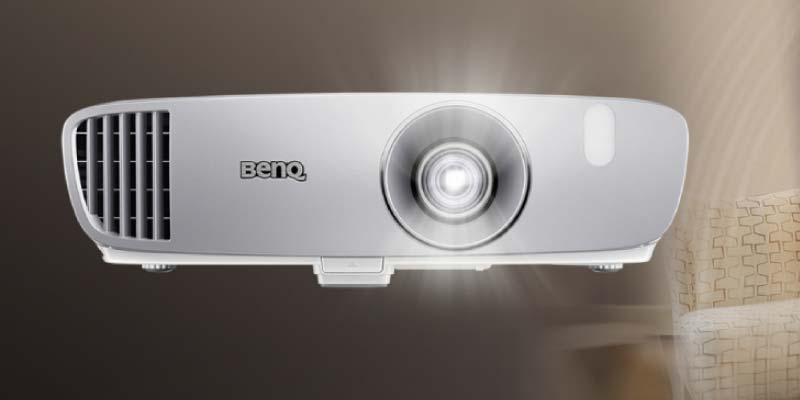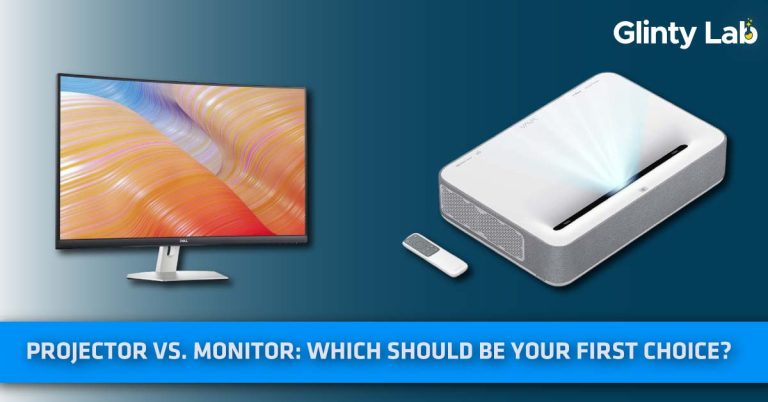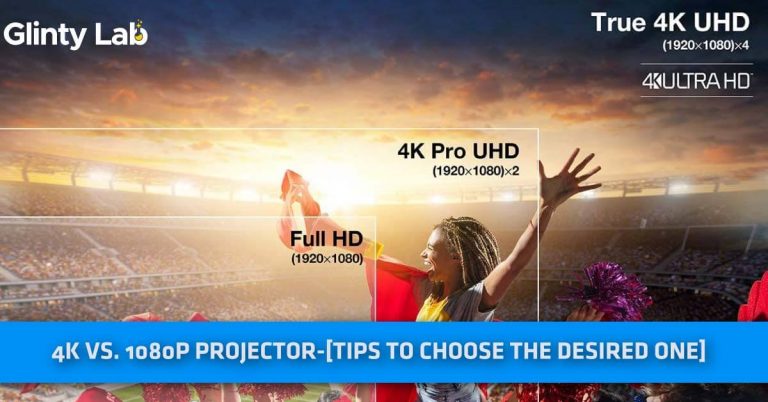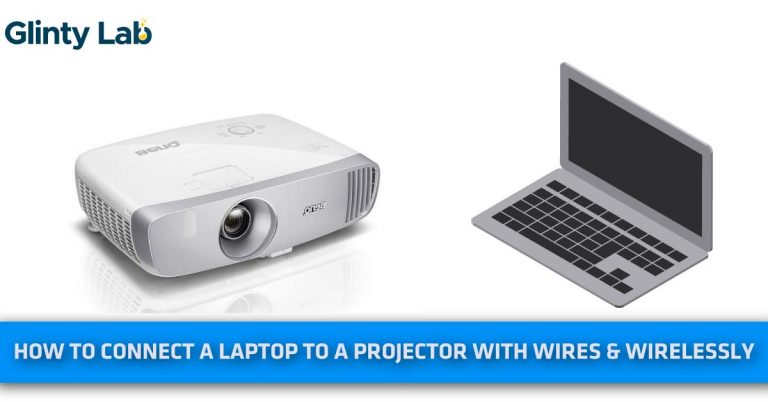Projector Lumens Guide – How many Lumens Do I Need?
What are Lumens? Projector Lumens
Projector Lumens are the measurement of the brightness that a projector releases. ANSI lumens (American National Standard Institute) is the standard unit in the market which are also called the true lumens for a projector.
Look out for both color brightness and white brightness before purchasing
Manufacturers don’t mention white and color brightness in their specification sheet. It is extremely important to know both color and white before making a purchasing decision.
If the information is 1 lumen, it means white brightness, the actual color brightness is around 1/3 of that lumen.
ANSI Lumens vs Lumens – Difference
Lumens are used for marketing purposes. Big e-commerce sites stat lumens instead of ANSI lumens which is the true measurement of the brightness of a projector.
If a company lists 2000 lumens of a projector, bear in mind that ANSI lumens of such may or may not be the same.
Lumens or LED lumens are claimed by independent small or big brands where ANSI lumen unit is internationally recognized (American National Standards Institute)
Only consider ANSI lumens for true brightness: Forget about the lumens if you are looking to buy a projector, only consider ANSI lumens if it is listed. If only lumens are listed you can sometimes trust the big brands like BenQ, Epson, Samsung, and Optoma, but it is safe to convert Lumens into ANSI lumens.
How To Convert LED Lumens & Light Source Lumens Into ANSI Lumens
In a rough calculation, LED Lumen’s value divided by 2.4 equals ANSI lumens which mean 1000 LED lumens equals 417 ANSI lumens.
Light source Lumen’s value multiple by either 0.04 or 0.05 which means 1000 light source lumens equals 60 ANSI lumens.
| LED Lumens | Light source Lumens | ANSI Lumens |
| 120 | 830 | 50 |
| 300 | 2000 | 120 |
| 480 | 3300 | 200 |
These are just rough calculations based on the ideal light conditions, actual outputs may vary from brand to brand.
What Is Projector Brightness?
Higher the lumen output higher the projector brightness. Both are directly linked that is why we purchased projectors with higher lumen output for outdoors, and less lumen output for indoors.
It is one of the key components for separating a good projector from the great one. A brighter model can eliminate some of the ambient light from the environment.
A brighter projector means more vivid colors and a clear picture in most cases, but that can also be a double-edged sword. Most cheap projectors with high lumen tend to decrease the picture when the brightness increases. Epson guide describes it the best
So the question is, how many lumens is enough for a projector?
How Many Lumens Is Enough? How Bright My Projector Should Be.
Projector brightness depends on the space, resolution, and ambient light. So first we need to explain and understand these situations before we get to the main point.
- Type of content
- Resolution
- Ambient light
Type Of Content:
The level of lumens depends on the type of content you are watching. That is why lumen output for home theater, gaming, and presentations are different.
Home theater: 1500 – 2000 lumens are standard for a dedicated home theater where ambient light penetration is minimum. You don’t need a super bright picture in a dark room. Less brightness enhances picture quality.
Check out our guide about the lux vs lumens.
For gaming:† 1800 – 2500 is normal for gaming because most people game in living rooms as well. I mostly play games in a bat cave environment with little ambient light, but I also travel a lot and I always carry at least one projector from my collection to play games with buddies on the road or in the hotel room. So a little more lumens are preferred because you won’t get the same environment everywhere.
Check out our guide about the projector resolution.
For business: 2000 – 3000. There is no controlled environment in most ceremonies or business presentations outdoor and in large venues. A bright projector is a necessity just in case.
Resolution:

Resolution directly impacts the lumen output. Standard resolution in most projectors is 1080p (1920 x 1080 pixels). However, 4K (3840 x 2160 pixels) gaining popularity.
Although it is out of the reach of most people because a native 4K projector can cost “between” $10k to $20k. The alternative to that is pseudo 4K resolution in which pixel-shifting technology is being used. A common person will never tell the difference.
So if you have a native 1080p projector, a normal lumen output from 1500 – 2500 is fine because that much resolution is enough to produce wonderful picture quality with vivid color even if the brightness is high, picture quality won’t suffer a great deal.
For a native 4K, or pseudo 4k (pixels shifted), you can go even higher like 3500 lumens. It will not downgrade the picture quality in most cases.
If your projector is cheap like 720p or a bit higher, avoid higher lumen output and avoid such models because the picture will be bright without any color details or black levels.
Ambient Light:
One of the biggest factors you might want to consider before purchasing a projector is ambient light penetration. It is the natural light that enters the living room or home theater.
Back in my hostel room, there was a lot of ambient light penetration. I calculated the intensity of light using the light meter, then I thought for a bright picture, I should get a medium budget projector with at least 2500 lumen output.
I knew a brighter picture can cast a greenish and bluish display, that is I opted for Epson 5050UB considering how popular it was at that time.
The point is, ambient light directly affects the brightness. To understand it better, here is a little example.
Home theater:
| Ambient light | Screen Size | Lumens |
| Little | 90-0110 inches | 1200 – 1500 |
| Normal | 90-110 inches | 1500 – 2500 |
| Lot | Regardless of the size | 2500 – 3500 |
Projector Specs That Affect The Image QualityGaming projectors are a lot similar to the home theater in terms environment needed to watch content. So consider similar lumen output for gaming projectors are well.
Lumens alone don’t affect the image quality, some other factors affect the final product. Those factors are:
What is the Contrast ratio? It is the ratio between the brightest white and darkest black or the ratio between minimum and maximum brightness. The bigger the difference between contrast ratios, the better your cinematic experience will be. You can check out the projector contrast ratio in detail.
What are Black levels? The darkness of the black color it can reflect. It means if you are projector has high black levels, you will be able to details in the black regions/areas of the screen.
Lumens and Throw ratio:
Throw ratio: Throw ratio means how far you should place the projector against the screen. In simple words, it is the distance between the projector and the screen.
If you are going for a long throw projector like BenQ TK850, make sure that lumen output is between 1500 – 2500 lumens.
If a projector is a medium throw like Epson 5050UB, then 2000 lumens is good enough.
For short throw or ultra-short throw projectors like Optoma GT5600, anything between 1500 – 3000 is a standard because projection doesn’t depend on the distance anymore.
This is just a rough calculation, other factors like ambient light, resolution, type of content which are explained below should be considered as well.
How To Increase Projector Lumens Output
Squeeze out every single lumen if you can. It will help you in your business outing and home theater experience. We have formulated some steps to maximize the lumen output instead of wasting the potential.
- Dust, debris, and dirt acts as an obstacle in the projection and blocks some of the light. Clean it regularly even it is covered by a lens cover.
- Vacuuming your projector’s air intake and ports is a good idea to remove the internal debrief and dirt. A cleaner airflow will ensure the projector remains cool if you are running it in a high brightness mode.
- I would advise using eco or normal brightness mode. It does not save electricity but increases the life lamp.
- Purchase the projection screen instead of projecting on onto the wall. The brightness and picture significantly improve with the CLR (ceiling light rejection) screens with high gain.
Learn the complete process of projector cleaning in this blog post.


![How To Hang Projector Screen From Ceiling? – [DIY]](https://glintylab.com/wp-content/uploads/2021/12/How-To-Hang-Projector-Screen-From-Ceiling-768x402.jpg)



![How to Connect Apple TV to a Projector? – [Easy Steps]](https://glintylab.com/wp-content/uploads/2022/02/Flat-Projector-screens-768x384.jpg)
